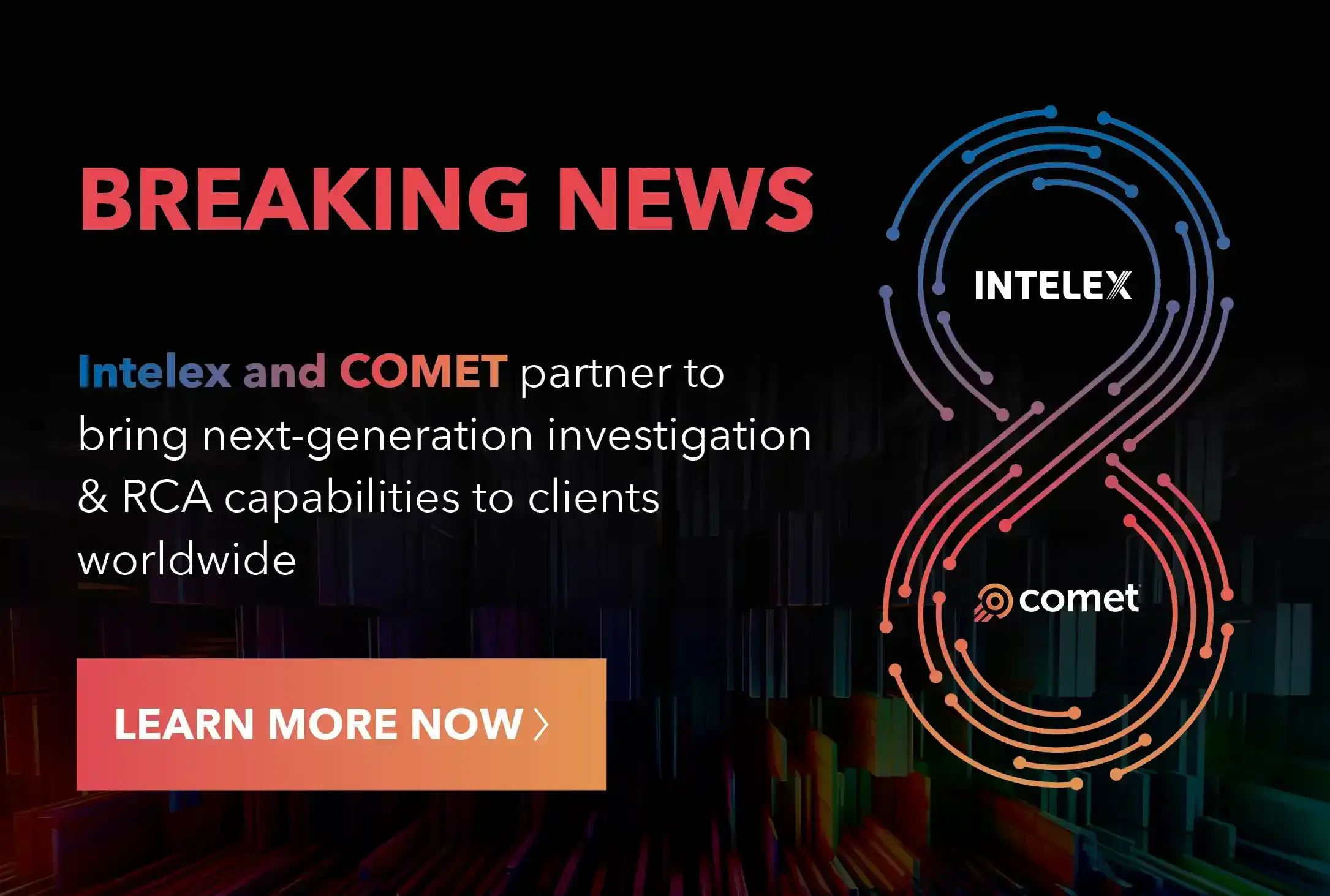The 10 features your root cause analysis software must have in 2025
In safety-critical industries, regulated sectors, and complex operations, failure to identify true root causes can lead to repeat incidents, compliance failures, financial penalties, and reputational damage. Choosing root cause analysis (RCA) software is no longer about digitising investigations. It is about equipping organisations with the tools and processes to drive consistent, defensible, and systemic problem-solving across the business.
Whether you lead safety, quality, assurance, compliance, or operational risk, these ten features define what your organisation should demand from any RCA software platform.
1. Embedded investigation methodology
RCA software must embed a proven, structured methodology into every investigation. This ensures consistency, improves investigation quality, removes variability between investigators, and strengthens defensibility. Standardised methodologies drive repeatable processes that standup to regulatory scrutiny and internal governance, regardless of who is leading the investigation.
2. Timeline recording and event sequencing
Accurately capturing the sequence of events is essential to uncovering root causes. RCA software should enable investigators to build detailed event timelines, identifying the chain of actions, decisions, and contributing factors. Timelines provide a clear foundation for causal analysis and ensure no critical information is missed.
3. Human factors and organisational analysis
Effective root cause analysis goes beyond technical failures. RCA software must support deep analysis of human behaviours, decision-making, organisational influences, cultural factors, and latent conditions that often drive incidents. Identifying these factors allows organisations to address systemic weaknesses rather than treating symptoms.
4. Visual root mapping and causal relationship analysis
Incidents often result from complex cause-and-effect chains. RCA software should provide interactive visual root maps that clearly illustrate contributing factors, interdependencies, and system-level failures. Visual mapping enables cross-functional teams and leadership to easily understand investigation findings and identify corrective actions.
5. Taxonomy-based cause coding
Consistent cause classification is critical for identifying recurring issues across sites, departments, and business units. RCA software must offer taxonomy-based cause coding, allowing organisations to categorise findings in a structured way. This drives consistency across investigations and supports high-level trend analysis for proactive risk management.
6. Corrective action integration and preventative focus
The goal of any investigation is prevention. RCA software must connect root causes directly to corrective and preventive actions (CAPA), ensuring accountability, tracking resolution progress, and verifying effectiveness. Strong platforms encourage proactive risk assessments, helping organisations address emerging risks before they escalate.
7. Seamless integration with existing systems
RCA software must integrate seamlessly with existing enterprise health, safety, and environmental (HSE) management systems such as Enablon, Cority, Intelex, and more, as well as issue tracking platforms, incident reporting tools, maintenance systems, and corporate risk platforms. This interoperability allows organisations to enhance existing digital infrastructure, break down data silos, and create a complete picture of operational risks, investigations, and corrective actions across the enterprise.
8. Enterprise-grade reporting and big data analysis
Leadership teams need clear, actionable insights. RCA software must offer robust reporting capabilities, including trend analysis, multi-incident data aggregation, and performance comparisons. Big data capabilities allow organisations to analyse large volumes of investigation data, identify systemic risks, and make data-driven decisions that improve operational performance.
9. Collaboration, scalability, and global consistency
RCA software should support collaboration across multipleteams, sites, and business units, allowing real-time investigation management across geographies. Standardised workflows ensure consistency at enterprise scale, even with diverse investigation teams and varying investigator experience levels. This is especially important for global organisations managing operations across different regions, cultures, and regulatory requirements.
10. Comprehensive training, enterprise implementation, and expert support
Technology alone is not enough. RCA software providers must offer structured onboarding, training programmes, user certifications, and expert investigation coaching. For enterprise deployments, proven large-scale implementation experience is essential. Through its global partnership with Arcadis, COMET delivers end-to-end implementation and operational risk consulting support, ensuring clients maximise long-term success, adoption, and ROI.
Why COMET sets the standard for root cause analysissoftware
COMET root cause analysis software is built specifically for organisations operating in safety-critical, regulated, and complex environments. It combines a fully embedded investigation methodology, interactive visual root mapping, human factors capability, advanced taxonomy coding, full integration with existing EHS and enterprise systems, robust enterprise reporting, preventative risk focus, scalable collaboration, comprehensive training, and global enterprise implementation delivered throughits partnership with Arcadis.
COMET empowers organisations to standardise investigations, strengthen learning, reduce recurrence, and support operational, regulatory, and business continuity objectives.
To see how COMET helps teams like yours run better investigations, identify real root causes, and manage risk more effectively, explore COMET’s free guided trial.
FAQs
Why is integration with existing HSE systems important?
Seamless integration allows organisations to leverage current HSE platformslike Enablon, Cority, Intelex, IBM Maximo, and more, eliminating silos andproviding a full view of operational risks.
Does COMET integrate with enterprise systems?
Yes. COMET integrates with leading EHS platforms, maintenance systems, andcorporate databases, ensuring bi-directional data connectivity andcomprehensive risk visibility.
How does COMET support global enterprise deployments?
Through its partnership with Arcadis, COMET offers full implementation support,global rollout expertise, enterprise training, and operational risk consulting.
Is RCA software only for safety incidents?
No. COMET supports investigations across safety, quality, assurance,compliance, environmental, and operational domains.




